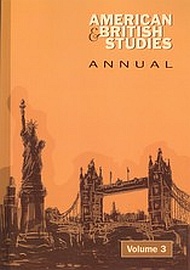Type, Allegory, Symbol: Jonathan Edwards and Literary Traditions
Keywords:
Jonathan Edwards; type; allegory; symbol; emblemAbstract
This article examines the rhetorical form of Jonathan Edwards’ (1703-1758) natural typology. Edwards, one of colonial New England’s greatest thinkers and theologians, apparently believed he was taking a bold step outside the well-established tradition of Calvinist typology, an exegetical principle based on figurative interpretation, when he argued that not only the Scripture but the created world also typologically represents divine truth. Contemporary scholars often see the natural type as a kind of proto-symbol, uniting mind and nature in a moment of transcendental perception. However, the rhetorical structure of the type suggests that Edwards’ natural type is closer to the emblematic tradition than to symbol or metonymy. While Edwards’ theory of typology might have been innovative, the literary form of the type remained traditional. The discrepancy between the content and form of Edwards’ natural typology gives us a more complex understanding of his position with respect to the allegorical and symbolist traditions.
References
Anderson, Wallace E. Editor’s Introduction to “Images of Divine Things” and “Types.” In Typological Writings, WJE, vol. 11, 3-33.
Auerbach, Erich. “Figura.” In Scenes from the Drama of European Literature, translated by Ralph Manheim, foreword by Paolo Valesio, 11-76. Minneapolis: University of Minnesota Press, 1984.
Baldick, Chris. The Oxford Dictionary of Literary Terms. 3rd edition. London, New York: Oxford University Press, 2008.
Bercovitch, Sacvan, ed. Typology and Early American Literature. Amherst: University of Massachusetts Press, 1972.
Daly, Peter M. Literature in the Light of the Emblem: Structural Parallels between the Emblem and Literature in the Sixteenth and Seventeenth Centuries. Toronto: University of Toronto Press, 1979.
Edwards, Jonathan. Scientific and Philosophical Writings. Edited by Wallace E. Anderson. Volume 6, WJE. New Haven: Yale University Press, 1980.
Edwards, Jonathan. Ethical Writings. Edited by Paul Ramsey. Volume 8, WJE. New Haven: Yale University Press, 1989.
Edwards, Jonathan. Sermons and Discourses 1720-1723. Edited by Wilson H. Kimnach. Volume 10, WJE. New Haven: Yale University Press, 1992.
Edwards, Jonathan. Typological Writings. Edited by Wallace E. Anderson, Mason I. Lowance, Jr., David H. Watters. Volume 11, WJE. New Haven: Yale University Press, 1993.
Edwards, Jonathan. The “Miscellanies,” (Entry Nos. a-z, aa-zz, 1-500). Edited by Thomas A. Schafer. Volume 13, WJE. New Haven: Yale University Press, 1994.
Edwards, Jonathan. Letters and Personal Writings. Edited by George S. Claghorn. Volume 16, WJE. New Haven: Yale University Press, 1998.
Edwards, Jonathan. Catalogues of Books. Edited by Peter J. Thuesen. Volume 26, WJE. New Haven: Yale University Press, 2008.
Fabiny, Tibor. “Edwards and Biblical Typology.” In Understanding Jonathan Edwards: An Introduction to America’s Theologian, edited by Gerald R. McDermott, 91-108. Oxford, New York: Oxford University Press, 2009.
Kimnach, Wilson H. Editor’s Introduction to Sermons and Discourses 1720-1723, WJE, vol. 10, 2-258.
Leader, Jennifer L. “‘In Love with the Image’: Transitive Being and Typological Desire in Jonathan Edwards.” Early American Literature 41, no. 2 (2006): 153-181. Accessed July 2, 2010. Project MUSE. doi: 10.1353/eal.2006.0021.
Lowance, Mason. Editor’s Introduction to “Types of the Messiah.” In Typological Writings, WJE, vol. 11, 157-186.
Lowance, Mason. The Language of Canaan: Metaphor and Symbol in New England from the Puritans to the Transcendentalists. Cambridge and London: Harvard University Press, 1980.
Man, Paul de. “The Rhetoric of Temporality.” Blindness and Insight: Essays in the Rhetoric of Contemporary Criticism, introduction by Wlad Godzich, 187-228. 2nd edition. Minneapolis: University of Minnesota Press, 1997.
Miller, Perry. Introduction to Images or Shadows of Divine Things, edited by Perry Miller, 1-41. New Haven: Yale University Press, 1948.
Piggin, Stuart and Dianne Cook. “Keeping Alive the Heart in the Head: The Significance of ‘Eternal Language’ in the Aesthetics of Jonathan Edwards and S. T. Coleridge.” Literature & Theology 18, no. 4 (2004): 383-414.
Quarles, Francis. Emblems, divine and moral, together with Hieroglyphicks of the life of man. English Emblem Books Project at Pennsylvania State University. Accessed July 2, 2010. http://emblem.libraries.psu.edu/home.htm.
Thuesen, Peter J. Editor’s Introduction to Catalogues of Books, WJE, vol. 26, 1-87.
Wainwright, William J. “Jonathan Edwards and the Language of God.” The Journal of the American Academy of Religion 48 (1980): 519-530.


